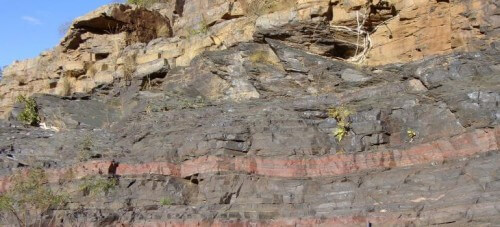This is according to a study of ancient soils in South Africa

Oxygen appeared in the atmosphere up to 700 million years earlier than we previously thought, according to research published today in the journal Nature that raises new questions about the evolution of early life.
Researchers from the University of Copenhagen and the University of British Columbia in Canada examined the chemical composition of three billion year old soils from South Africa - the oldest soils on Earth, and found evidence of low concentrations of atmospheric oxygen. Previous studies have indicated that oxygen began to accumulate in the atmosphere only about 2.3 billion years ago during a dynamic period in Earth's history known as the Great Oxidation Event.
"They always knew that the production of oxygen in the process of photosynthesis ultimately led to the oxygenation of the entire atmosphere and the evolution of aerobic life," says Shawn Crowe, co-author of the study and professor in the Department of Microbiology and Immunology, Atmospheric Sciences and Oceanography at the University of British Columbia.
"From this study it now appears that the process began at a very early stage in the history of the Earth, and it supports an older age for the beginning of oxygen production through photosynthesis and for life that needs oxygen," says Crowe, who conducted the research while he was a postdoctoral fellow at the Nordic Center for Evolution at the University of Southern Denmark in collaboration with the director of the center Donald Canfield.
There was no oxygen in the atmosphere for at least the first hundred million years after the Earth was formed. Today, the Earth's atmosphere contains 20 percent oxygen thanks to photosynthetic bacteria, trees and other plants, which consume carbon dioxide and release oxygen. The bacteria laid the foundations for the development of oxygen-breathing organisms that inhabit the earth.
"These findings imply that it took a very long time for geological and biological processes to create the oxygen-rich environment we enjoy today," says Las Dossing, the other lead scientist in the study, from the University of Copenhagen.

5 תגובות
Avner, your friends at Fox News have never heard of an average - neither between regions nor between years.
Avner
and early summer in Australia. But this figure is not convenient for your agenda…..
Early snow in Europe. Global warming has not stopped.
The idea of detecting life from afar is an old one. In the 70s, James Lovells and Lynn Margolis proposed the idea as a method to detect life from afar.
Within 20 years it will be possible to discover Earth-like life on other planets by searching for oxygenated atmospheres on distant planets
A kind of surveying telescope that reveals the absorption spectrum of oxygen changes during an eclipse when the planet hides its sun